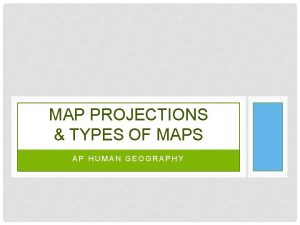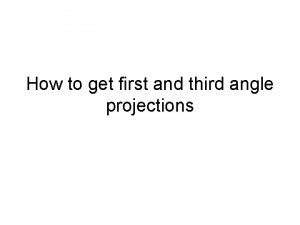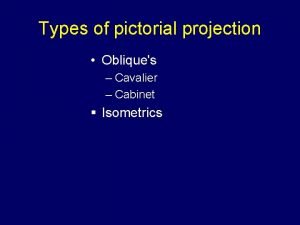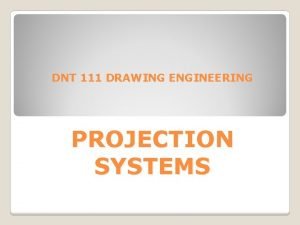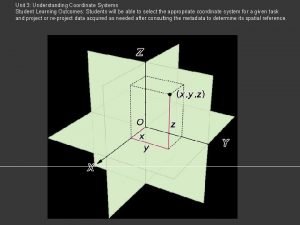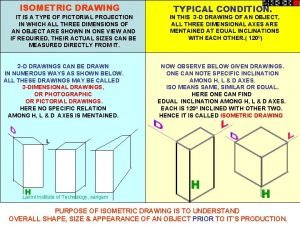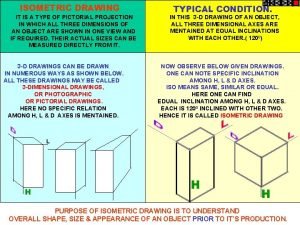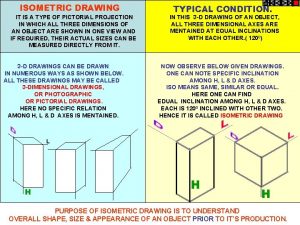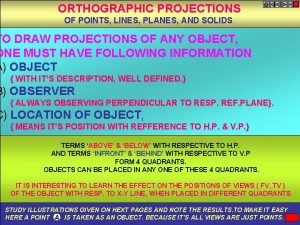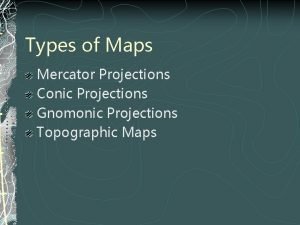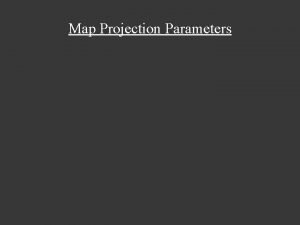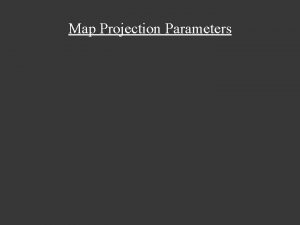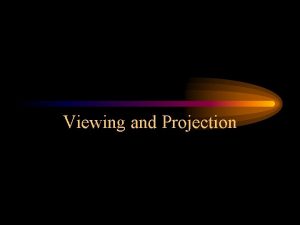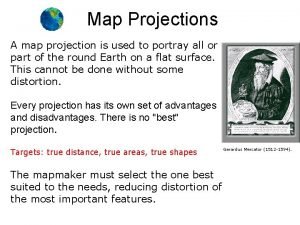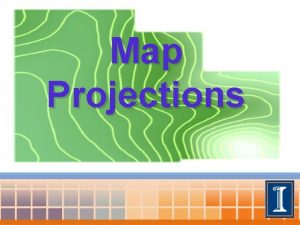Maps Map projection Types of map projections Maps
















- Slides: 16

Maps Map projection Types of map projections

Maps Visual representation of the earth’s surface or the phenomenon (any observable occurrence) that occur on the earth’s surface.

Map projections A map projection is a method for taking the curved surface of the earth and displaying it on something flat, like a computer screen or a piece of paper. Maps cannot be created without map projections. Every map projection has some distortion.

Types of Projections Equal-area (or equivalent) projections: maps that maintain area but distort other properties. Conformal (or orthomorphic) projections: maps that maintain shape but distort other properties (it is impossible to have a projection that is both conformal and equal area). Azimuthal projections: maps that maintain direction but distort other properties. Equidistant projections: maps that maintain distance but distort other properties.

Map Projection Types Cylindrical: projection of a spherical surface on a cylinder Conic: projection of a spherical surface on a cone Planar or Azimuthal: projection of a spherical surface on a plane

Map Projection Types n Cylindrical n Conical n Planar

Cylindrical projections Straight meridians and parallels that intersect at right angles. Scale is true at the equator or at two standard parallels equidistant from the equator. Often used for marine navigation because all straight lines are lines of constant azimuth.

Cylindrical projections

Conic projections • • Best for hemispheres or small regions Area and shape only slightly distorted Directions are true in limited areas. Used for maps of North America.

Conic projections

Planar projections • Distorts area, not shape • Directions are true from the center point and scale increases away from the center point as does distortion in area and shape. • Used for navigation in polar regions.

Planar projections

Choosing a projection Rule of thumb: A country in the tropics asks for a cylindrical projection. A country in the temperate zone asks for a conical projection. A polar area asks for an azimuthal projection.

Goal = minimize distortion Cylindricals are true at the equator and distortion increases toward the poles. Conics are true along some parallel somewhere between the equator and a pole and distortion increases away from this standard. Azimuthals are true only at their center point, but generally distortion is worst at the edge of the map.

Remember, there are hundreds of map projections, each used for a specific purpose.

THANK YOU
 Mercator projection ap human geography
Mercator projection ap human geography Orthographic engineering isometric drawing
Orthographic engineering isometric drawing Third angle system
Third angle system Cavalier oblique
Cavalier oblique Scalar vs vector projection
Scalar vs vector projection Difference between 1st angle and 3rd angle
Difference between 1st angle and 3rd angle Usgs map projections poster
Usgs map projections poster Reittihaku google maps
Reittihaku google maps What is viewing in computer graphics
What is viewing in computer graphics Isometric projection of hemisphere
Isometric projection of hemisphere Isometric drawing pyramid
Isometric drawing pyramid Oblique drawing
Oblique drawing Isometric drawing type
Isometric drawing type Principles of orthographic projection
Principles of orthographic projection Flat earth approximation
Flat earth approximation Draw projection of line
Draw projection of line Orthographic projection of points and lines
Orthographic projection of points and lines
